Color Mixing w/ Lasers
Overview: The primary colors for light are red, green, and blue, and the addition of all three creates white light. Combine red and blue to make magenta. Combine green and blue to make cyan. Lastly, combine red and green to make yellow.
Supplies: One red laser, one green laser, 2 laser power supplies, 2 laser stands, beam splitter cube on mount, post, post holder, white screen. The demo works best if the red laser power is at least twice the power of the green laser.
Objectives: What happens when we combine 2 different colors of light?
Setup:
- Set up the red and green lasers perpendicular to each other
- Place the beamsplitter cube at the intersection of the red and green lasers
- Place a white screen opposite one of the lasers
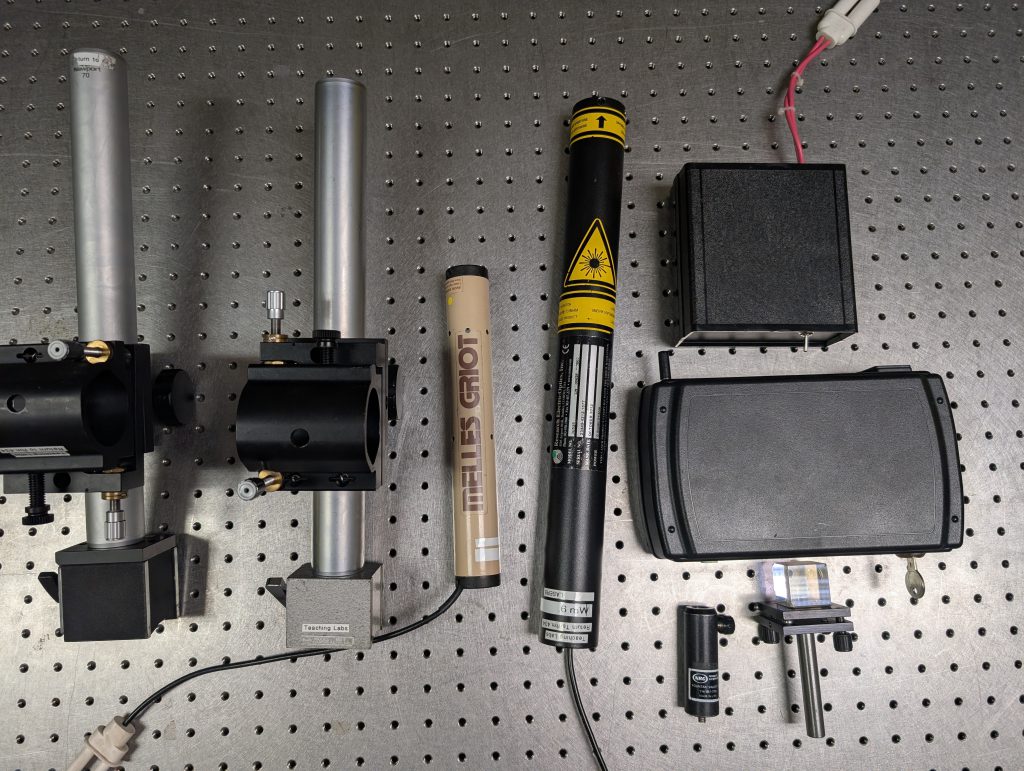

How to run the demo:
- Adjust the lasers until the spots overlap on the screen and form a yellow spot
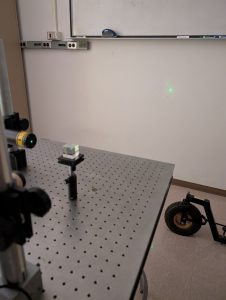
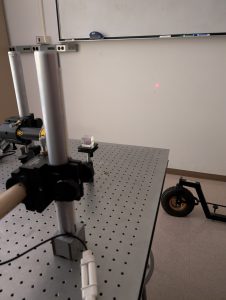
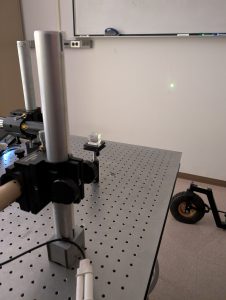
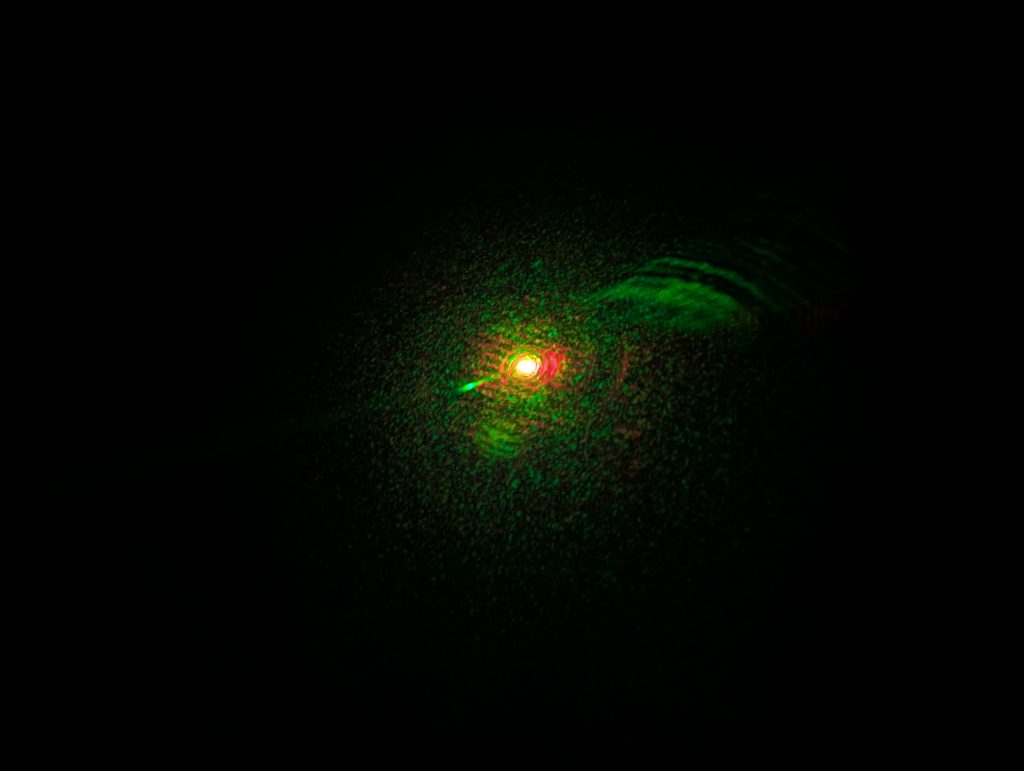
What’s Happening?
This form of color mixing is called additive mixing, where the combination of primary colors (red, green, and blue) creates white light. When you combine two of the three primary colors you can create magenta, cyan and yellow. Take a red and green laser to combine their light together and make yellow spot. Note that this is different than subtractive mixing; we experience subtractive mixing with paint and inkjet printers, where the combination of primary colors (cyan, yellow, magenta) creates black paint.
Learn more: (external links)

